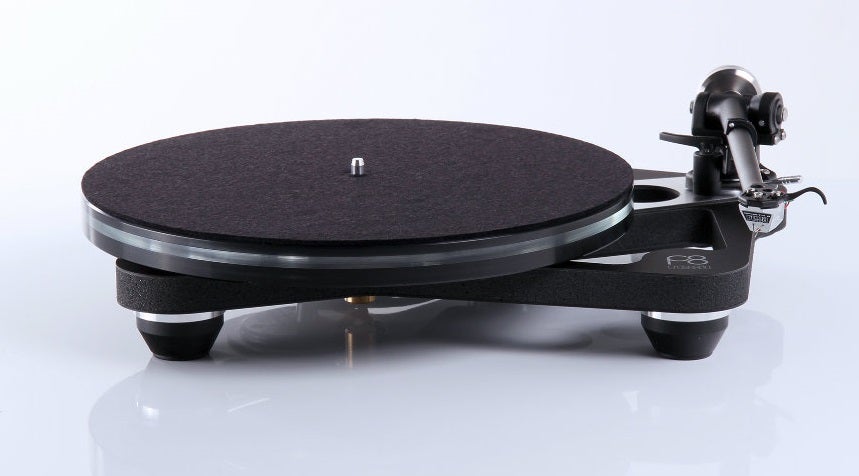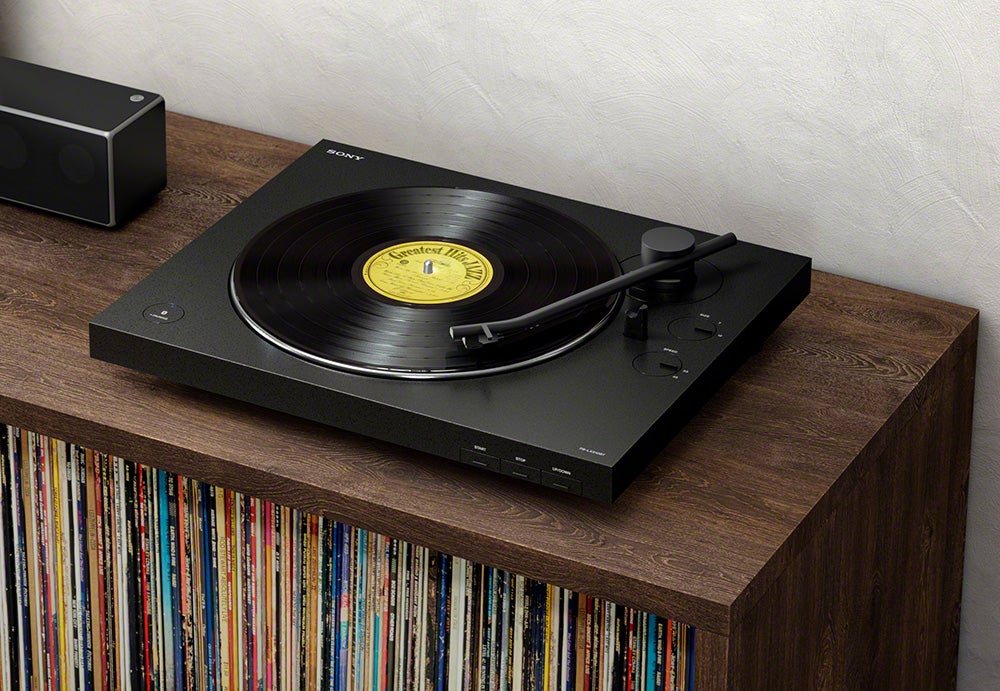KEF LSX II Review
It’s a semi-secret upgrade, but an upgrade nonetheless
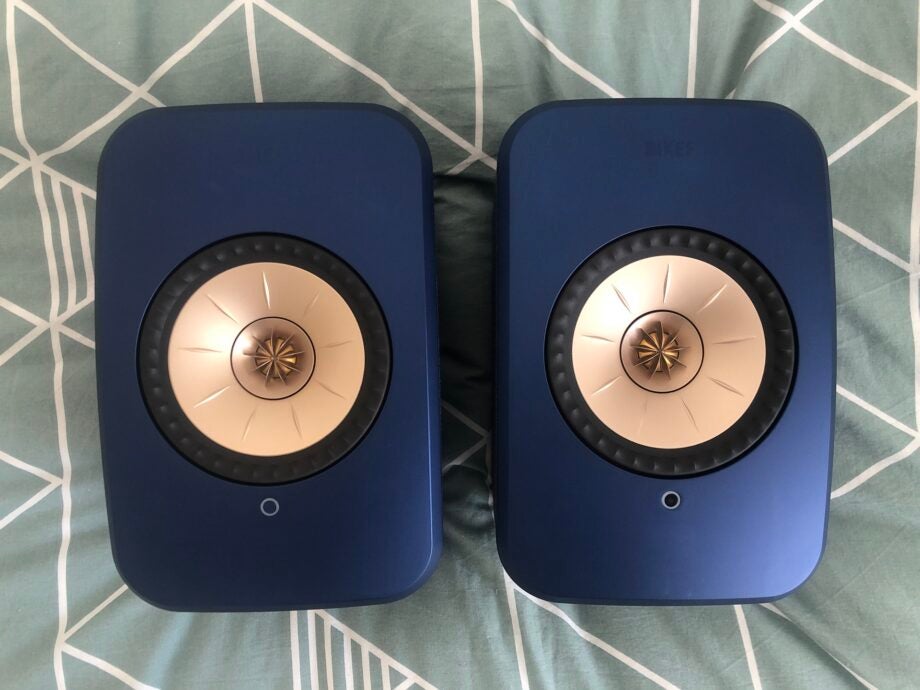

Verdict
The KEF LSX II is an even more diverting an option than the product it replaces, which makes it downright compelling
Pros
- Lively, dynamic and direct sound
- Good looks and great build quality
- Lots of connectivity
Cons
- Speakers need wiring together for best sound
- Not ideal for larger rooms
- Bespoke supports are expensive
Key Features
- ConnectivityMultiple wired and wireless connections, including HDMI ARC
- Drive unitsUni-Q driver array
- ControlKEF Connect control app + physical remote
Introduction
KEF introduced its original LSX ‘compact audio streaming system in two speakers back in 2018, so the time is most definitely right for a revamp. And though KEF has in some ways gone to town with LSX II, at first glance it may seem that only the price has changed – and not for the better.
But though the changes aren’t especially visible, they’re certainly significant – the LSX II is an even more flexible product than the system it replaces. So there are just a couple of questions to be answered here – if you own an LSX system is it worth upgrading to the LSX II? And if you don’t, is this the best all-in-one stereo system this sort of money can buy?
Availability
- UKRRP: £1199
- USARRP: $1399
- EuropeRRP: €1499
- CanadaRRP: CA$1999
- AustraliaRRP: AU$2195
The KEF LSX II is on sale now, and in the United Kingdom the asking price is £1199. Over in the United States it costs $1399, while in Australia it sells for AU$2195.
There’s two ways to look at this. You don’t get an awful lot of stuff for your money or, at least, not visually. But you’re buying an entire, self-contained audio streaming system, which puts the price into rather more context. Of course, the LSX II isn’t the only game in town – Q Acoustics’ remarkable Q Active 200 system is very similar in concept, although a little bit larger in the flesh.
Design
- Five very agreeable finishes
- Usefully compact
- Virtually identical, visually, to the original LSX
Although the dimensions of 24 x 16 x 18cm (HxWxD) per speaker are the same as the outgoing LSX system, the LSX II is a new design. It doesn’t look it, though, because in large part the original LSX still looks fresh and interesting, and also because KEF has chosen to spend its ‘new model’ budget elsewhere.
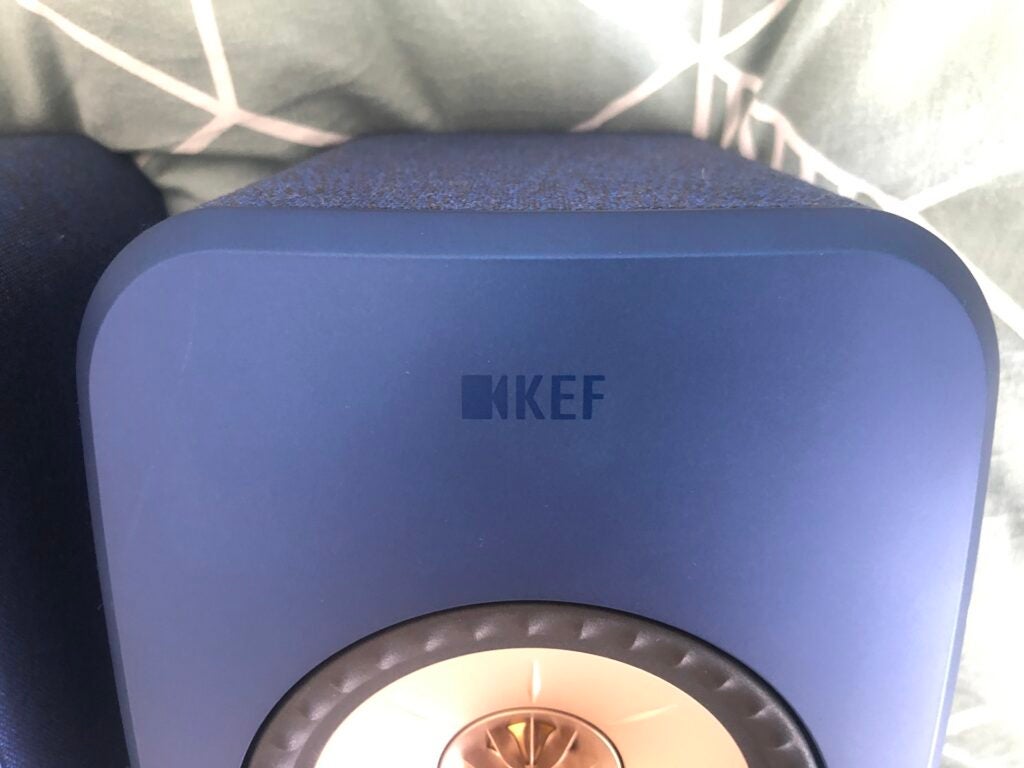
So your money buys two usefully compact and good-looking loudspeakers, in a choice of five quite distinct finishes. Choose ‘carbon’ black or ‘cobalt’ blue and the speakers are wrapped in the inescapable Kvadrat acoustic cloth, while ‘mineral’ white is a satin matte finish and ‘lava’ red a glossy alternative. Or there’s ‘Soundwave’, a finish for which KEF collaborated with the late Terence Conran.
These dimensions mean the LSX II is quite forgiving about positioning (as you don’t overlook each speaker’s rear-firing bass reflex port). KEF will happily sell you a pair of wall brackets (B1, £190), desk-pads (P1, £140) or speaker stands (S1, £320) to match the colour of your speakers if you fancy.
Features
- 200 Watts of power
- Uni-Q driver arrangement
- Wide-ranging connectivity
As with the dimensions, so with the driver array and amplification – there’s no difference between LSX and LSX II. So you get the 11th generation of KEF’s entirely admirable Uni-Q driver arrangement. Here it features a 19mm aluminium tweeter behind a complex waveguide, sitting in the throat of a 115mm aluminium mid/bass driver. And you get an all-in total of 200 watts of Class D power: 70 per mid/bass unit and 30 per tweeter.
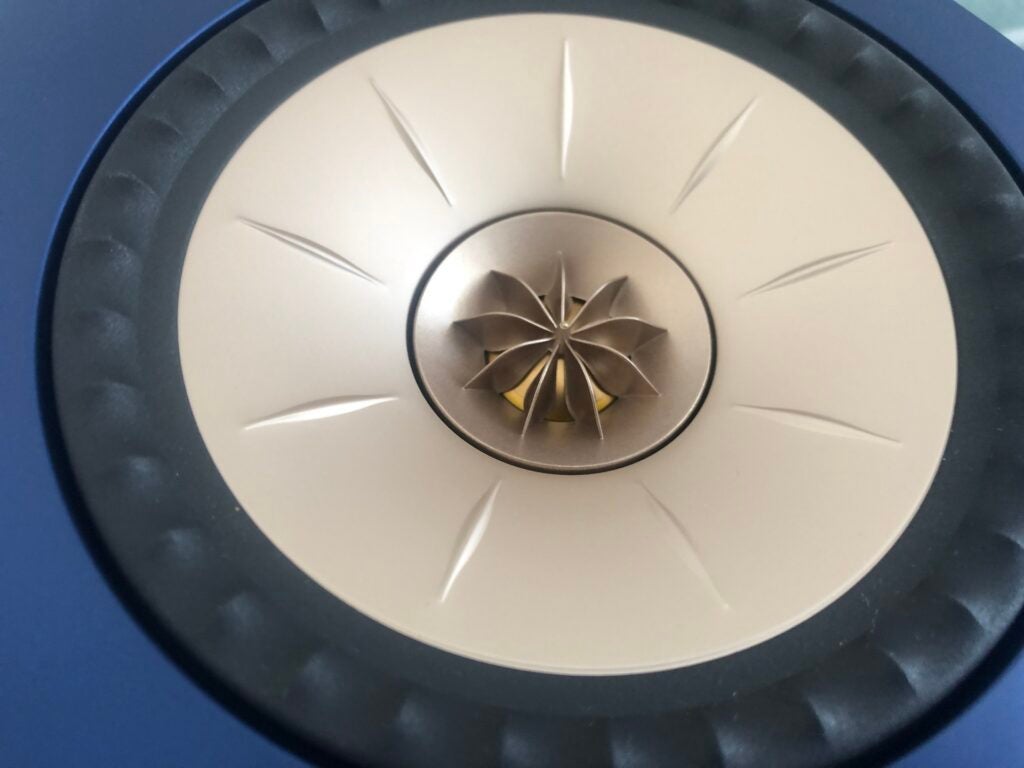
Where the LSX II have changed over the LSX, though, the differences are significant. LSX II adds USB-C and HDMI ARC inputs to a line-up of physical connectivity that includes digital optical, 3.5mm analogue and Ethernet inputs, and a subwoofer output. All these inputs are on the ‘primary’ left-channel speaker, along with buttons for Bluetooth pairing and a CAT 5 socket to allow this speaker to be hard-wired to its ‘secondary’ right-channel partner. There’s also a button in case you’d rather pair the speakers wirelessly.
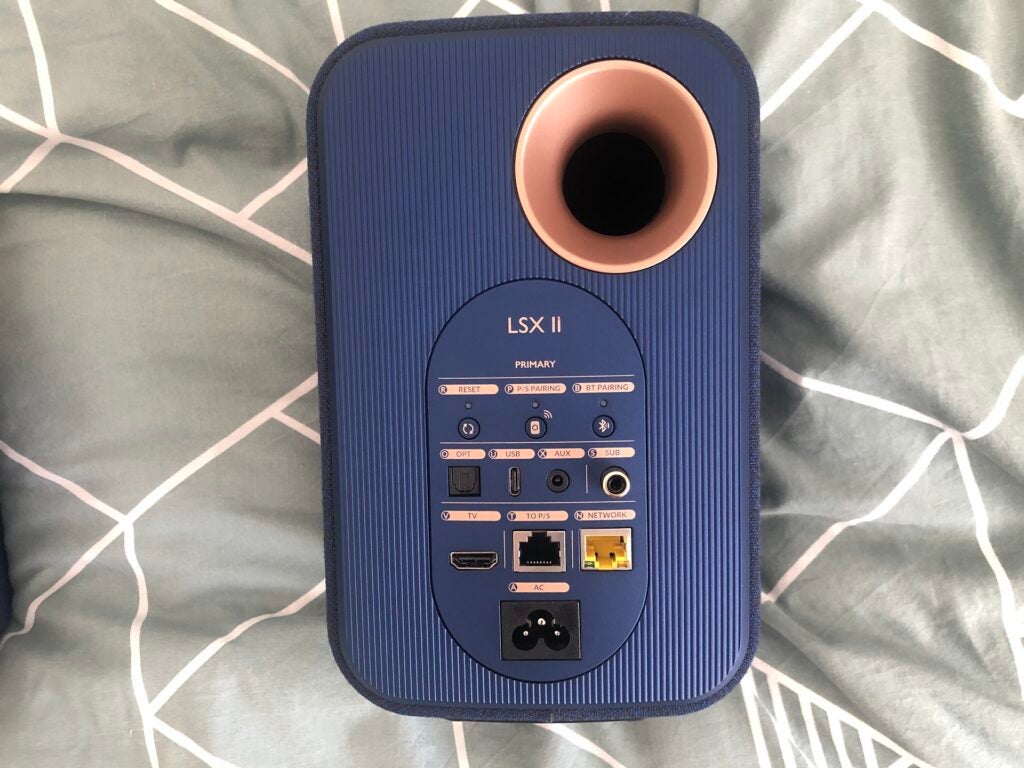
Wired pairing would seem to be the way forward if it’s at all possible, though. When wired together, the LSX II can receive digital audio information up to a 24-bit/384kHz and DSD256 standard, but will downscale it to a 24-bit/96kHz resolution. Paired wirelessly, though, the downscaling continues all the way to 24-bit/48kHz.
Thanks to new control software and the integration of KEF’s latest ‘W2’ streaming platform, the LSX II are compatible with most digital audio files (including AAC, FLAC, WAV and MQA) and wireless connectivity options are numerous. Apple AirPlay 2, Bluetooth 4.2, Chromecast and dual-band wi-fi are all available, and the KEF are Roon Ready too.
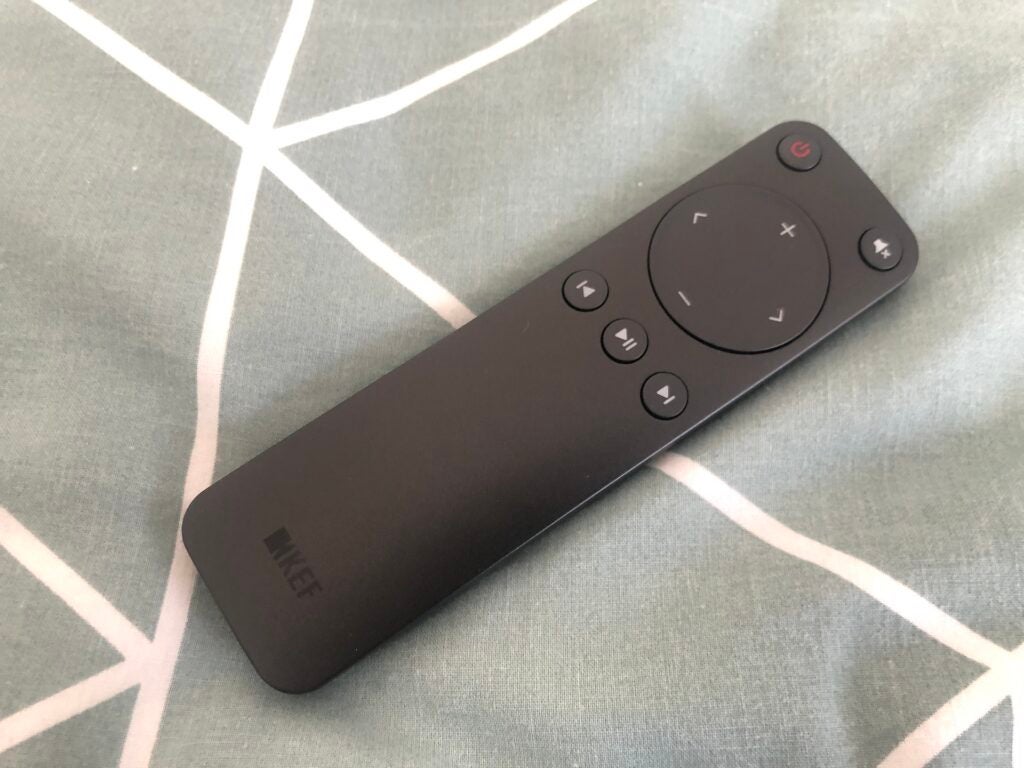
Control options are also improved. Well, that’s not strictly speaking true for the remote control handset – it remains a bog-standard and unremarkable item that really has no business accompanying a design as well-realised as the LSX II. But the switch from the KEF Stream app that controlled the LSX to the KEF Connect app that controls the LSX II is an obvious and decisive upgrade.
The Connect app is wide-ranging, stable, clear and logical – and it’s home to a lot of functionality, including EQ adjustment and room calibration. And it’s simple to integrate your favourite music streaming services, as well as access content on your local network or internet radio.
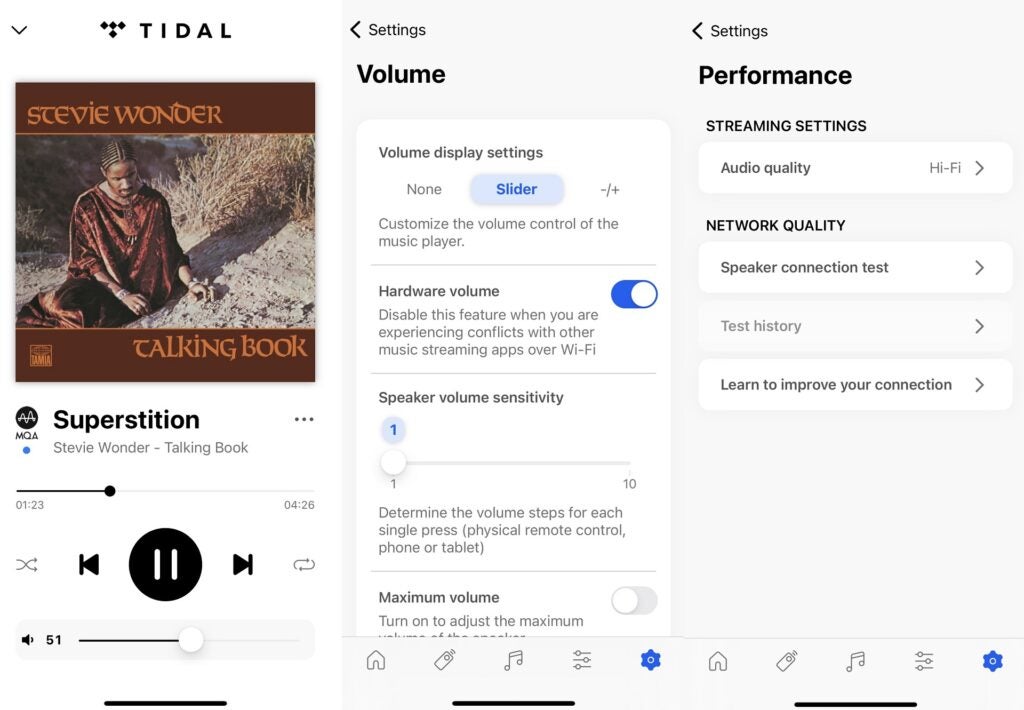
Sound Quality
- Great focus an dynamism
- Warm-ish and detailed presentation
- Slightly (and predictably) small-scale sound
Sometimes little speakers can get a bit obsessed with trying to sound big – ‘yappy dog syndrome’, I believe it’s called. Well, that’s not how the KEF LSX II roll. They sound bigger than they are, most certainly – but more importantly they sound balanced, direct and dynamic in every musical sense of the word.
A listen to an MQA-powered TIDAL Masters file of Stevie Wonder’s timeless (and endlessly engaging) Superstition makes the point in unequivocal fashion. The hip-shaking tempo and rhythm is expressed faithfully, and the big dynamic shifts in attack are as well-described as the more nuanced harmonic variations evident within each individual instrument.
The LSX II attack the recording, of course, but not in any demonstrative or unnatural manner. Their control is significant, their authority equally so. They establish a believable and easy-to-understand soundstage, and while it’s not the biggest around it’s most certainly properly organised.
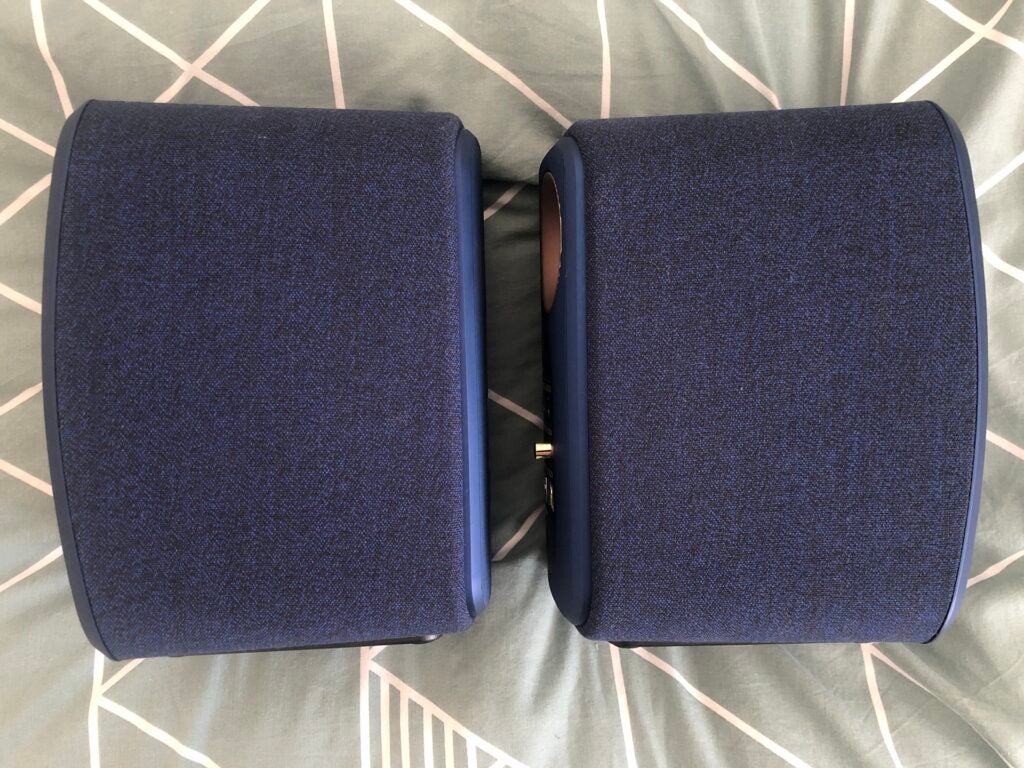
Low frequency extension is quite impressive for speakers of this size fitted with drivers of this size. They don’t dig as deep as more traditionally proportioned alternatives, naturally, but they bass they generate is solid, square-edged and carries plenty of detail both broad and fine. The top of the frequency range is similarly detailed, similarly controlled and equally substantial. And in the midrange, the KEF are insightful enough to let a singer fully express their character and emotion – especially when, as with this recording recording, the singer’s absolutely chock-full of both.
The laws of physics dictate speakers of this size will struggle to fill a biggish listening room with sound, and that’s how it proves. But it’s with fairly near-field listening that the LSX II start to become a truly outstanding option. The Uni-Q driver arrangement is among the best around when it comes to stereo focus and precision, and if you’re fortunate (and tidy) enough to have the speakers on a desktop they are a deeply impressive listen.
Even at modest volumes they give no information away, and if you decide to turn up the wick a little they respond by simply getting louder. There’s no shoutiness or edginess to their overall presentation, but rather an overall tonality that’s just slightly on the warmer side of ‘neutral’. And the fact these characteristics are broadly similar across all of the inputs, both wired and wireless, only makes the LSX II seem more accomplished. No matter what you listen to, and no matter from where it’s sourced, all these positive attributes are in evidence.
Latest deals
Should you buy it?
You want a high-quality system that knows its place LSX II is ‘discreet’ in the best way – physically, not sonically
You’re expecting room-filling sound Unless it’s a fairly small room, of course
Final Thoughts
Where products like this are concerned, ‘convenience’ is almost as important as ‘performance’ – and thanks to some judicious upgrades and a nice new control app, the LSX II tick both boxes with a big fat Magic Marker. Get beyond the slight lack of bass extension and the predictable lack of outright scale, and this is an all-in-one stereo music streaming system that covers all the bases.
How we test
We test every speaker system we review thoroughly over an extended period of time. We use industry standard tests to compare features properly. We’ll always tell you what we find. We never, ever, accept money to review a product.
Find out more about how we test in our ethics policy.
Tested for more than a week
Tested with real world use
FAQs
Currently the black option is out of stock on the KEF website (but in stock at Amazon UK), while the white, red, and blue options are only available for pre-order (the go on sale from mid-July onwards). The Soundwave edition is available now.
Full specs
Sustainability
Trusted Reviews’ holds the fact that global warming is not a myth as a core value and will continuously endeavour to help protect our planet from harm in its business practices.
As part of this mission, whenever we review a product we send the company a series of questions to help us gauge and make transparent the impact the device has on the environment.
We currently haven’t received answers to the questions on this product, but will update this page the moment we do. You can see a detailed breakdown of the questions we ask and why in our sustainability info page.

